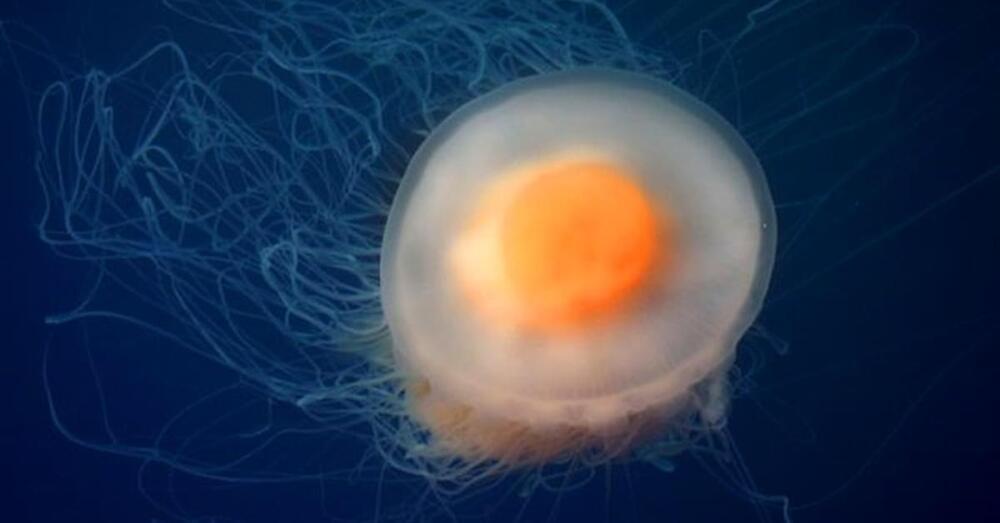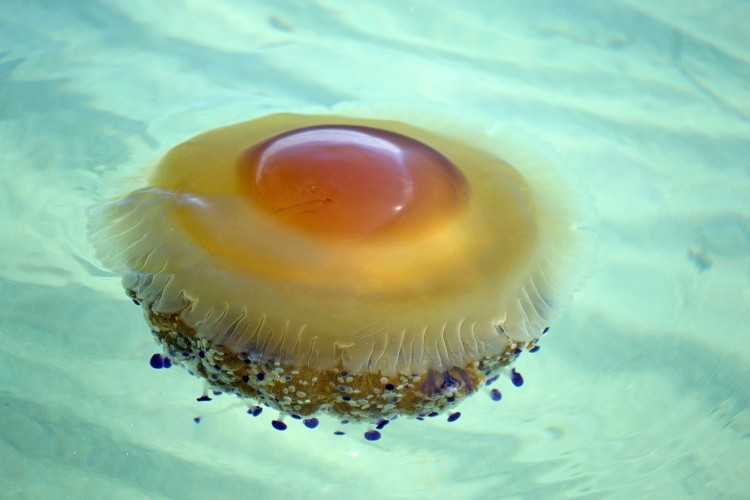The fried egg jellyfish, scientifically known as Cotylorhiza tuberculata, is a mesmerizing marine creature that has captured the attention of ocean enthusiasts and scientists alike. With its unique appearance resembling a sunny-side-up egg, this jellyfish boasts a fascinating biology and intriguing behaviors that make it one of the ocean’s most remarkable inhabitants.
Reaching up to 15 inches in diameter, the fried egg jellyfish is not only visually captivating but also has a unique structural design. Its bell is composed of a soft, gelatinous substance, allowing it to drift gracefully through the water. The jellyfish’s long, trailing tentacles, which can extend from the bell, are equipped with specialized stinging cells called nematocysts. These cells are used to capture prey, primarily small fish and plankton.
Despite their delicate appearance, fried egg jellyfish are well-adapted to their environment. They are passive drifters, relying on ocean currents for movement. Their feeding strategy involves capturing small prey using their tentacles and stinging cells, immobilizing them before bringing them to their mouths.
As with many marine species, fried egg jellyfish face threats from climate change, pollution, and habitat degradation. Protecting their habitats is crucial for maintaining the balance of marine ecosystems. These jellyfish not only contribute to biodiversity but also play a role in nutrient cycling within their environments.